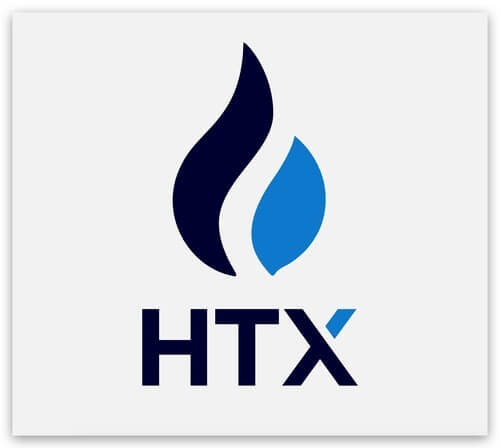Springtime is coming to the North American cryptocurrency mining industry. With access to robust capital markets, cheap power, a stable political climate and increasing participation of technological innovators, industrial-grade mining operations are burgeoning in the United States and Canada, providing competition to Chinese mining pools that now control more than half of the world’s hashing power.
These new ventures are acutely aware of the need to minimize mining’s carbon footprint. In March, when Neptune Digital Assets and Link Global announced they would develop a new five-megawatt Bitcoin mining facility in Alberta, Canada, for instance, Neptune CEO Cale Moodie cited the “substantial global pressure to develop sustainable [emphasis added] Bitcoin mining operations around the world” — adding that the project would be powered by solar, wind and natural gas.
“A large investment in North America mining infrastructure is currently taking place,” Ethan Vera, co-founder and chief financial officer of Luxor Technologies and of Hashrate Index, tells Magazine, while CoinShares chief strategy officer Meltem Demirors writes in a recent blog post: “We have seen over $200M of capital deployed into building onshore mining capacity in the United States alone.”
“There’s an upwards trend in mining companies looking at the U.S. and North America,” Amy Davine Kim, chief policy officer of the Chamber of Digital Commerce, tells Magazine, and there is a growing willingness among some U.S. states to support such crypto mining ventures. Kentucky, for instance, passed two bills in March that give tax breaks to crypto miners, whom the state wants to attract in order to create jobs and energize local economies.
“North American capital has been unleashed,” Vera explains, adding: “Public and private markets are pouring money into Bitcoin mining,” and it is all setting the stage “for large-scale North American build-out.”
What took so long?
Some wonder how and why Western nations allowed China to take such a lead in crypto mining in the first place. China now accounts for 65% of global BTC mining, according to the Cambridge Centre for Alternative Finance. This is compared with only 7.24% for the U.S., which is the second-largest hub, though no one really knows the global distribution with certainty.
Some have pegged the Chinese share to be lower. For example, a 2020 study commissioned by Fidelity Investments estimates that 50% of global mining power capacity is “likely” in China, with 14% in the United States. Meanwhile, an April 6 paper written by academics from the University of the Chinese Academy of Sciences, Tsinghua University, Cornell University and the University of Surrey in Nature Communications, a peer-reviewed journal, estimates the Chinese share to be much higher: “As of April 2020, China accounts for more than 75% of Bitcoin blockchain operation around the world.”
The paper goes on to explain that some of China’s rural areas are considered an “ideal destination for Bitcoin mining” because of cheaper electricity prices and large tracts of undeveloped land for mining pool construction.
“In the early days, the Wild-West nature of the mining industry held back major investments,” says Vera, explaining how Bitcoin mining became so geographically skewed. “The opaqueness of the ASIC supply chain” — the application-specific integrated circuits that are specifically designed to perform the hashing calculations demanded of miners — “and mining pool auditability led capital to be sidelined.”
With regard to “auditability,” he further explains that “Most miners didn’t know if they were getting underpaid for their hashrate to mining pools. If mining pools quoted them a fee it was very hard to check that was the actual fee being charged. In many cases miners blamed mining pools for underpayment.” More recently, however, “There has been a large improvement in the mining supply chain professionalism,” Vera adds.
China’s dominance is perhaps better explained in macro terms, suggests Yu Xiong, associate dean international at Surrey University and chair of business analytics at Surrey Business School — and one of the authors of the Nature Communications paper. North America is saddled with higher labor costs and energy costs than China, which leads the world with roughly 30% of global hydropower capacity and a 50% share of coal power generation. “Those facilitated the mining industry in China,” Xiong tells Magazine.
Chase Lochmiller, CEO and co-founder of Crusoe Energy Systems — a Colorado company that uses waste gas from oil well sites to power Bitcoin mining rigs — tells Magazine that more miners are now migrating to North America, driven by the increased attention paid to BTC by investors and society in general.
Bitcoin mining “slammed” by environmentalists
Any movement to North America could also invite further scrutiny from environmentalists who have attacked Bitcoin’s prodigious consumption of energy — and its related climate-threatening emissions. The annualized energy consumption of the Bitcoin mining industry in China alone will peak in 2024 at 296.59 terawatt-hours, according to the Nature Communications paper, which “exceeds the total energy consumption level of Italy and Saudi Arabia” in 2016.
In March, Bank of America analysts “slammed” Bitcoin mining for its environmental wantonness, noting that “A single Bitcoin purchase at a price of ~$50,000 has a carbon footprint of 270 tons, the equivalent of 60 ICE [internal combustion engine] cars.”
The proof-of-work consensus mechanism used to verify Bitcoin transactions requires would-be miners to compete against each other to solve complicated mathematical puzzles. Computers, such as ASICs, specially built to solve those problems burn through immense amounts of electricity. Miners that solve the puzzle get to form and confirm the next “block” of transactions, and they receive BTC as a reward for their efforts.
Still, “This is a security feature of PoW not a bug,” says Vera. If the puzzles to be solved — the answers to which are called “hashes” — are too easy to solve, the network invites denial-of-service attacks from hackers.
Lochmiller says that high energy usage in itself is “not necessarily a bad thing” if it is done right. Crusoe Energy, for instance, has developed a technology that captures the natural gas that is “flared” into the atmosphere at oil well sites and uses this waste gas “to power modular data centers [mining rigs] deployed directly at the wellsite.”
When co-locating rigs in this manner — as the company has done in Colorado, Montana, Wyoming and North Dakota — the result is an overall 71% reduction in CO2 emissions when compared with flaring, Lochmiller tells Magazine. “It’s a net benefit to the environment, and a net advantage to BTC.”
The ecological challenges attached to crypto mining “are easily addressable,” Clark Swanson, CEO of Blockcap — one of the largest Bitcoin mining operations in North America — tells Magazine, adding:
“The Bitcoin network is the first use of energy that does not require its source of energy to be co-located near the end user population.”
Swanson stresses that BTC mining is moving toward making renewables the primary source “and perhaps one day the sole source of energy to the Bitcoin network.” Even today, Blockcap utilizes power that achieves a nearly 50% carbon-neutral output. “We are continuing to drive our carbon-emission target to neutral.” At present, however, most Bitcoin mining globally is not powered by renewable energy sources like solar, wind or hydro. According to the Cambridge Centre for Alternative Finance, “39% of hashing’s total energy consumption comes from renewables.”
Not all are impressed by recent measures, however. Alex de Vries, founder of Digiconomist, calls the co-location solution preposterous, telling Magazine: “We’re not having a climate change problem because fossil fuel extraction is not efficient enough.” He adds:
“Using a byproduct of fossil fuel extraction still means Bitcoin is running on fossil fuels, and it only adds to the bottom line of fossil fuel companies.”
De Vries admits that solar panels provide green energy and are an improvement over using flared gas, “but so far the only substantial source of renewable energy going into the Bitcoin network is dodgy hydropower that can only be obtained for just a couple of months per year,” as is the case in China’s Sichuan province — the world’s largest BTC mining hub.
Even if the Bitcoin network were to run entirely on renewable energy, continues de Vries, it wouldn’t solve all its PoW-related problems. “This network runs on highly specialized equipment that cannot be repurposed,” and the growing demand for the ASIC machinery “already adds to the disruption in the global semiconductor supply chain.” The end result will be “a substantial pile of electronic waste on top of all that energy consumption. No amount of green energy can fix that.”
Optics will become more important, arguably, if the mining industry’s center of gravity shifts from China to North America, where regulators and environmentalists might be more sensitive than China’s energy authorities to the industry’s energy consumption and carbon footprint.
A security risk?
Beyond the energy and environmental questions, others see significant security risks in Bitcoin’s consensus mechanism. “Just consider that half of the network’s hashrate is physically located in China,” says de Vries. “That’s a major security risk.”
Something similar was suggested by Ripple co-founder Chris Larsen in an opinion piece for The Hill in August 2020. He wrote: “At least 65 percent of cryptocurrency mining is concentrated in China, which means the Chinese government has the majority needed to wield control over those protocols and can effectively block or reverse transactions.”
In the same vein, former Acting U.S. Comptroller of the Currency Brian Brooks noted in November 2020 that China has captured more than 51% of the mining capacity on the Bitcoin blockchain, “which means that the very first Internet of Money […] is now essentially owned by China. So, as a country, we now face a geostrategic competitiveness issue, which is: Do we in the United States want to own Internet 2.0 in the same way that we own Internet 1.0?”
Warnings about a 51% attack on the Bitcoin network from China or elsewhere crop up fairly regularly in the cryptoverse, but the risk is mostly theoretical, writes developer Jameson Lopp in an August 2020 blog post. Irrespective of its “scary-sounding” name, if such an attack were to come, it would be “limited in its effectiveness” and “unlikely to disrupt network operations for more than a short period of time.”
During such an assault, the attacker couldn’t actually steal people’s Bitcoin arbitrarily, explains Lopp, and attackers could only double-spend only their own coins. Also, the hackers could neither make invalid transactions valid nor change consensus rules. These limitations, continues Lopp, probably make cryptocurrency exchanges the “juiciest targets” for 51% attacks. But there are numerous downsides for even these more limited assaults, including the fact that “Any exchange with decent liquidity to make them attack-worthy will likely have withdrawal limits.” Lopp adds that the threat from China, limited as it is, will further diminish over time:
“Over the very long term I expect we will see semiconductor foundries outside of Asia begin producing more mining chips and countries with even cheaper power sources will continue to become more industrialized, thus providing more competition when miners are seeking out new locations to set up shop. China’s mining dominance is unlikely to last; I expect that this theoretical attack will become less and less likely.”
It isn’t environmentalists, hackers or even hegemonic nation-states that will eventually doom the PoW mining model, according to Kevin Dowd, professor of finance and economics at Durham University in the United Kingdom — it’s the basic laws of economics.
Dowd argues that Bitcoin mining has the industrial structure of a natural monopoly — i.e., where production is cheapest with one producer. “There are inherent centralizing tendencies that will eventually undermine its value proposition,” Dowd tells Magazine. This problem of excessive centralization isn’t going away, even if most BTC mining shifts from China to North America, he asserts.
Is the PoW consensus doomed?
Does the PoW protocol come with its own expiration date, then? After all, Ethereum, which boasts the second-largest cryptocurrency by market capitalization, is moving to a proof-of-stake consensus mechanism that should bring with it significantly reduced energy consumption and a smaller carbon footprint — along with increased speed, if all goes well. Does this represent the future of blockchain technology?
“Proof-of-work is the only battle tested consensus mechanism,” says Vera. “While proof-of-stake may work, it is still an experiment.” His business believes that Bitcoin will remain attached to a PoW consensus “indefinitely — and it will only get better with time.”
“I see value in both consensus mechanisms,” Lochmiller tells Magazine. The sheer size of investment required to undertake BTC mining discourages cyberattacks, while PoS is “still in its infancy, still being rolled out.” Swanson adds that in Bitcoin’s 12 years of existence, the PoW consensus protocol has successfully thwarted all attacks on the network, stating:
“While a proof of stake protocol may be more efficient from the use of power utilization and computational speed, it has inherent deficiencies that make it insufficient as a long-term Bitcoin protocol.”
When asked if mining is Bitcoin’s Achilles’ heel, Kim answers: “I disagree. There are ways to incentivize appropriate energy consumption.” Bitcoin mining, as currently constituted, may be wasteful, but other things waste a lot of energy and emit lots of carbon, including the U.S. military. Ecology alone may not be a sufficient reason to abandon PoW mining.
“First, we need better data,” adds Kim. How much ecological damage is really being done? “We also have to look at the benefits” of the Bitcoin network, which allows a safe, secure way to transfer value anywhere in the world and can bring millions of unbanked individuals into the world’s financial system for the first time — to cite two potential benefits. Ecology is a concern, yes, “But it’s important not just to talk about climate only,” says Kim.
A new center of gravity for BTC mining?
Can one really expect Bitcoin mining activity to shift significantly from China toward North America in the next few years? Given its higher energy and labor costs and its stricter regulations, Xiong is doubtful that North America will dethrone China anytime soon. Perhaps, however, “Some other countries with more renewable energy, and lower operation costs, could rival China,” he tells Magazine.
“The U.S. is growing aggressively” as a mining venue, says Lochmiller, partly a result of the “professionalization” of the sector. But all those Chinese mining groups aren’t going to vanish overnight — barring some major regulatory intervention. As such, Lochmiller expects China to still claim 40% to 50% of the world’s BTC mining activity three years hence, with perhaps 30% from North America, 20% from Europe and the remaining 10% from elsewhere.
Regarding mining’s future configuration, “I’d love to see it inverted,” says Kim, with 65% for the U.S. and 7% for China — though that probably isn’t likely. The key thing is the U.S. needs a comprehensive policy at both the state and federal levels to attract and keep innovative crypto and blockchain firms.
Kim adds: “We want that work here — as happened with the Internet and Silicon Valley.” Already, states like Kentucky and Texas and cities like Miami are recognizing that blockchain represents the future, “So I anticipate seeing some progress on the mining front over the next three years.”
“North America is on the verge of an explosion of hashrate growth, leveraging robust capital markets, sophisticated energy infrastructure and political climate,” says Vera. “I expect North America to gain another 10% of global hashrate market share over the next year.”
Clearly though, as the North American mining industry develops, it has to be mindful of the ecological costs of growth, and continued movement toward renewable and carbon-neutral energy sources is critical if it is to gain mining share, stresses Vera. “As Bitcoin gains mass adoption, this [the environmental impacts] will continue to be the major argument against it.”
















